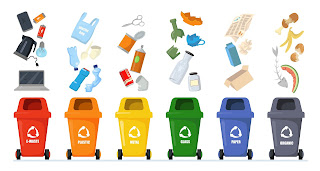Trashed Clothes: The Hidden Crisis in Fashion Waste
In a world increasingly driven by fast fashion and consumerism, the problem of trashed clothes has grown into a full-blown environmental crisis. Every year, millions of tons of clothing are discarded, often ending up in landfills or being incinerated. While most people think about recycling their plastic bottles or cans, few consider the lifecycle of their wardrobe. The consequences of this oversight are far-reaching, impacting not just landfills but the health of our planet as a whole.
The Scale of the Problem
It’s estimated that the global fashion industry produces about 100 billion garments annually. Shockingly, nearly 92 million tons of textile waste are generated each year. A significant percentage of this waste comes from trashed clothes—items tossed away due to minor wear, shifting trends, or impulsive purchasing habits. Often, these garments are still in wearable condition but are thrown out because repairing or donating them is deemed inconvenient.
What happens to these trashed clothes? Most are sent to landfills where synthetic fibers, like polyester, can take hundreds of years to decompose. Others are incinerated, releasing harmful chemicals and greenhouse gases into the atmosphere. Only a tiny fraction is recycled or repurposed, highlighting the urgent need for better waste management strategies in the fashion sector.
Why Are Clothes Trashed So Easily?
Several factors contribute to the rampant disposal of clothing:
-
Fast Fashion Culture: Brands release new collections weekly, encouraging a 'buy and toss' mentality.
-
Low-Quality Materials: Cheap fabrics and poor construction make garments less durable, leading to quicker disposal.
-
Consumer Behavior: Many consumers lack awareness about clothing waste and are often swayed by trends rather than longevity.
-
Limited Recycling Infrastructure: Unlike bottles or cans, textile recycling systems are less widespread and harder to access.
When you combine these factors, it’s easy to see how trashed clothes have become such a pervasive issue.
Environmental and Social Impacts
The environmental consequences of trashed clothes are staggering. Textile production alone accounts for about 10% of global carbon emissions—more than all international flights and maritime shipping combined. The production process also demands enormous amounts of water; for instance, making a single cotton shirt requires about 2,700 liters, enough to meet one person’s drinking needs for two and a half years.
When clothes are trashed, all the resources used to produce them—water, energy, labor—are wasted. Additionally, when synthetic fabrics break down, they release microplastics into the soil and waterways, further polluting the environment and harming wildlife.
There are also social implications. Many garments are made in countries with lax labor laws, meaning workers often endure poor conditions for minimal pay. Trashing clothes undervalues their hard work and perpetuates a cycle of exploitation.
A Shift Towards Conscious Consumption
Fortunately, awareness about the dangers of trashed clothes is growing. More consumers are beginning to ask where their clothes come from and where they end up. Movements promoting slow fashion, upcycling, clothing swaps, and sustainable shopping habits are gaining traction.
Here are a few ways individuals can make a difference:
-
Buy Less, Choose Well: Invest in high-quality, timeless pieces that will last longer.
-
Repair and Upcycle: Instead of discarding damaged clothes, repair them or turn them into something new.
-
Donate Responsibly: Ensure donations go to organizations that will truly distribute or recycle the items.
-
Support Sustainable Brands: Choose companies that prioritize ethical production and environmental stewardship.
On a larger scale, businesses and organizations also have a responsibility to tackle the fashion waste problem.
How Brands Can Lead the Change
Brands have immense power to change consumer behavior and set industry standards. By adopting sustainable practices—such as using eco-friendly materials, creating recycling programs, and educating consumers—companies can help reduce the amount of trashed clothes ending up in landfills.
One shining example of a brand taking action is SwagCycle. Recognizing the growing issue of branded merchandise and clothing waste, SwagCycle offers a responsible solution for companies looking to repurpose or recycle unwanted goods. Instead of letting outdated swag and apparel add to the global trash problem, SwagCycle connects organizations with verified recycling partners and donation channels. Their mission not only prevents clothing from being trashed unnecessarily but also supports a circular economy where materials are continuously reused and reimagined. Through initiatives like SwagCycle, companies can make a real difference—and consumers can feel good knowing their old swag isn’t destined for a landfill.





Comments
Post a Comment